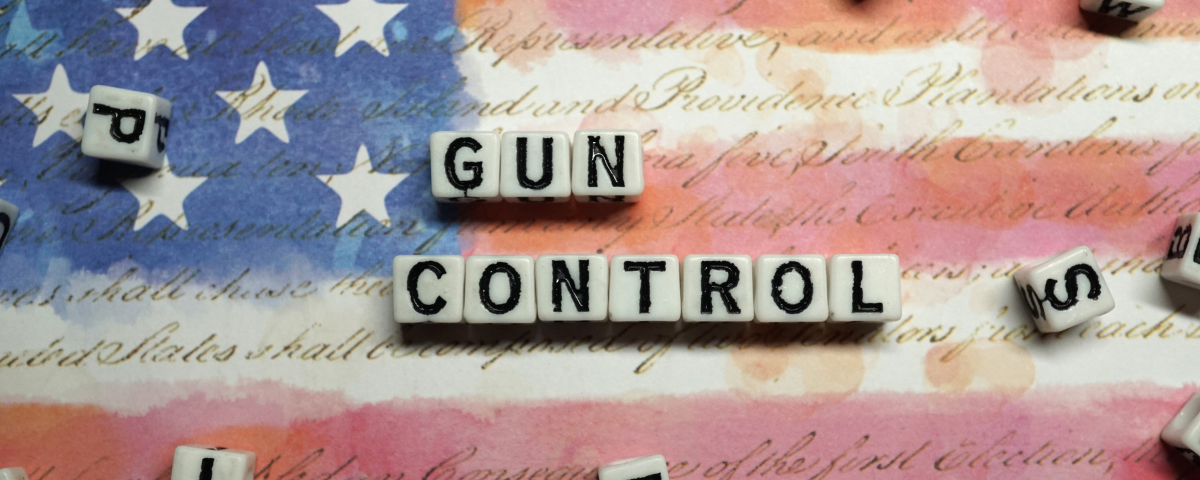
Are Prices Going to Keep Going Up? Public Perceptions Around Inflation
February 15, 2024
Agile Research 101 with Brianna Boyer of AYTM
February 23, 2024What is one of the most divisive topics in the United States? Gun control has to be in the top 3. In our recent round of research-on-research, we explored the opinions around gun control using a 10-point scale. We focused on the extremes by grouping results of the top three and bottom three boxes.
Let’s dive into what we uncovered.
Overall, we found that 52% of respondents are highly concerned about gun control, compared to 16% with a lower level of worry. This sharp disparity not only sheds light on the breadth of societal engagement with gun control issues but also illuminates the varied intensities of concern across the population.
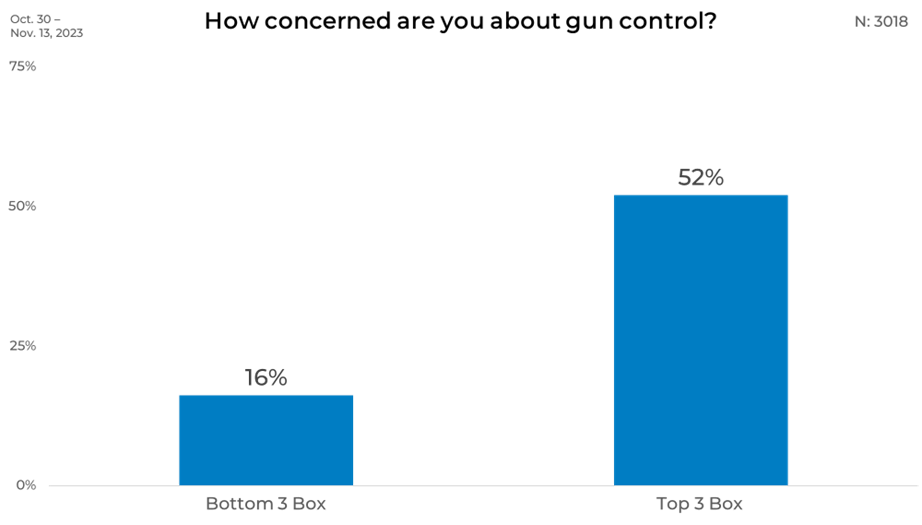
Gender
The breakdown of results by gender found that males had a lower level of concern around gun control than females. Conversely, a higher percentage of females had a high level of concern about gun control, 55% to 49%. The data suggests that while concern over gun control is a shared sentiment, the intensity of that concern varies.
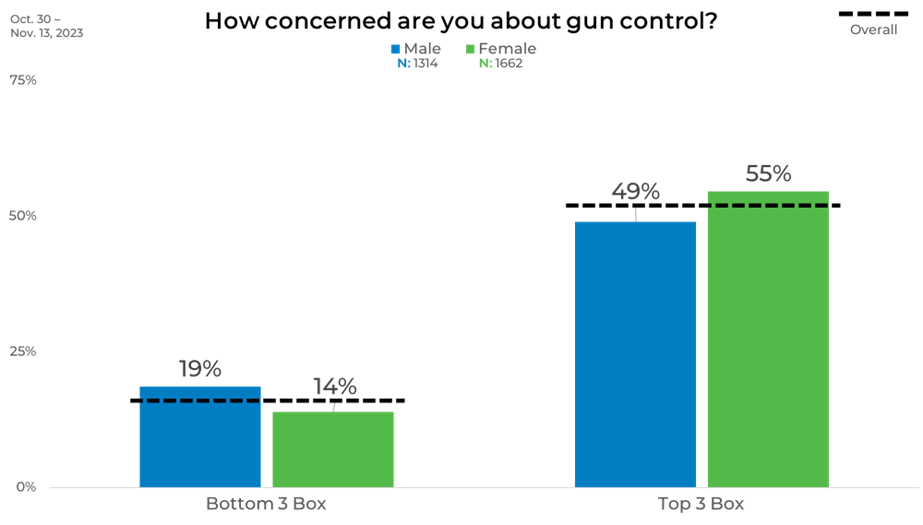
Age
Looking at the results by age offered some surprising insights. The percentage of respondents with a high level of concern about gun control increases with age., with 64% of those aged 65+ expressing a high level of concern. Respondents aged 18-24 had the lowest percentage of having a high level of concern, with 48%, a 16-point difference from the 65+ age group. This progression reflects the growing concern with age, particularly highlighting a significant jump in urgency among the senior population.
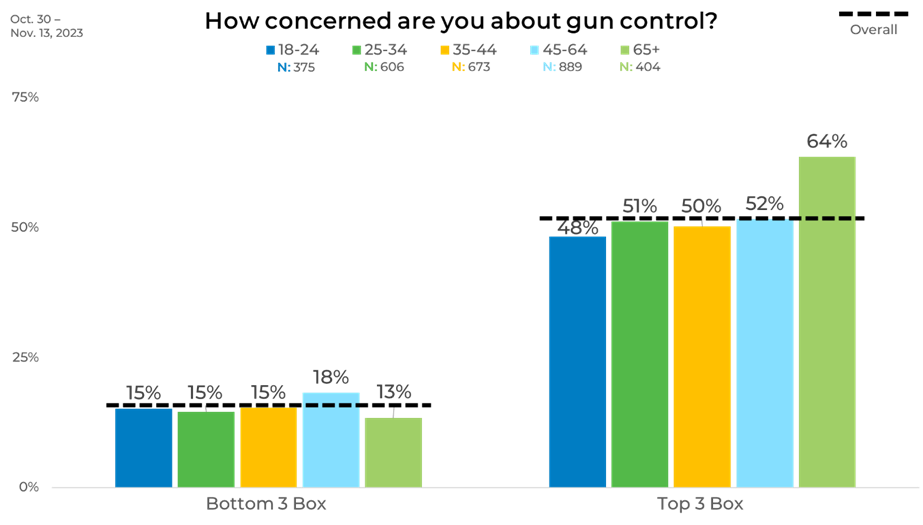
Income
Next, we looked at the results by income. Of those with a high level of concern, the percentage of respondents increases as income increases. We see a difference of 9% between the lowest income level and the highest.
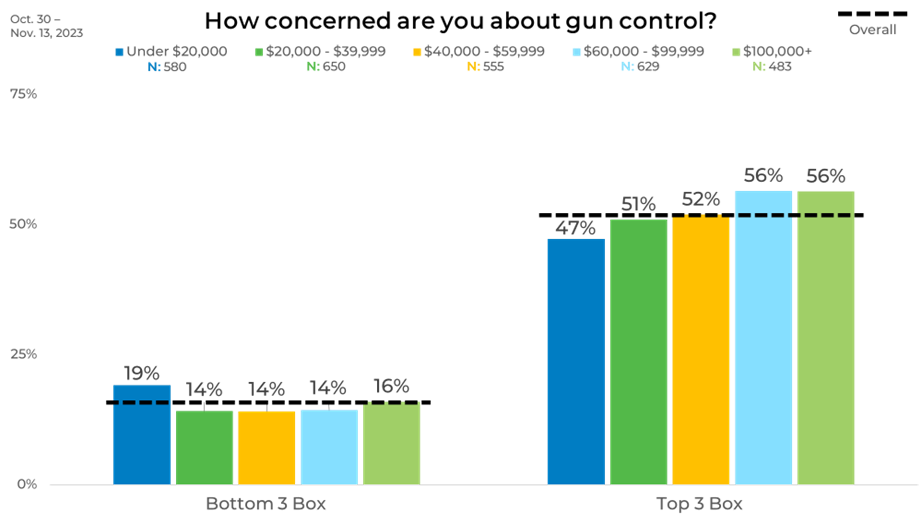
Political Affiliation
The breakdown of results by political affiliation highlights the starkest differences. 73% of Democrats are highly concerned about gun control, nearly double the number of Republicans who are. Independents are in the middle, with 47% highly worried about gun control, less than the overall average.
Conversely, Republicans have the highest percentage of respondents that have a low level of concern regarding gun control at 24%, four times higher than Democrats.
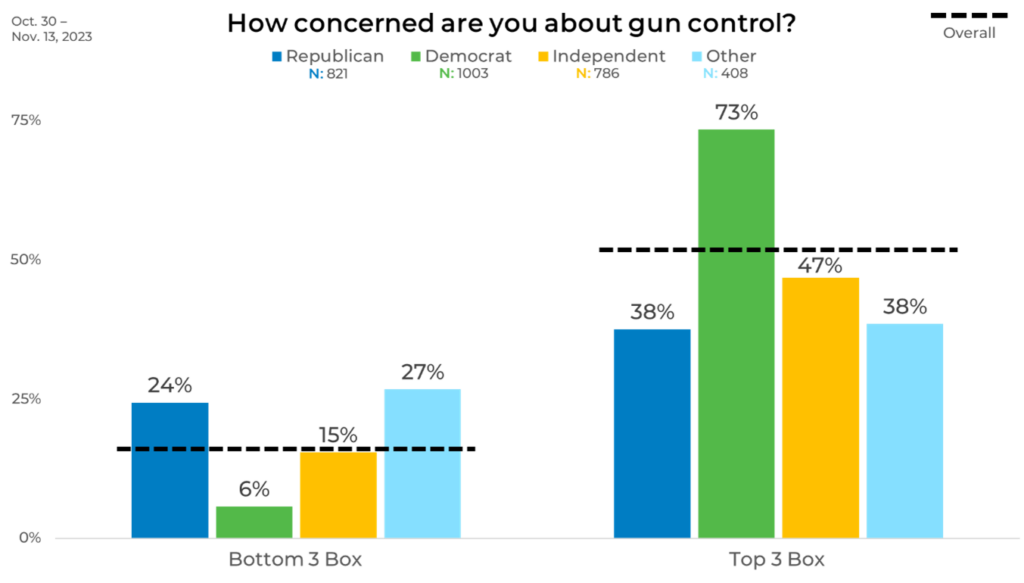
Ethnicity
When looking at the results by ethnicity, we uncovered some interesting insights. Across all ethnicities, 50% of respondents indicated they are highly concerned about gun control. Asians had the highest percentage of respondents at 60%, 10 points higher than Caucasians.
We found the inverse among those who have a low concern about gun control. Caucasians had the highest percentage of respondents with low concern at 18%, 10 points higher than Asians. This data reflects a significant engagement with gun control issues among minority groups, with Asian or South Asian and Hispanic/Latino communities expressing the highest levels of concern.
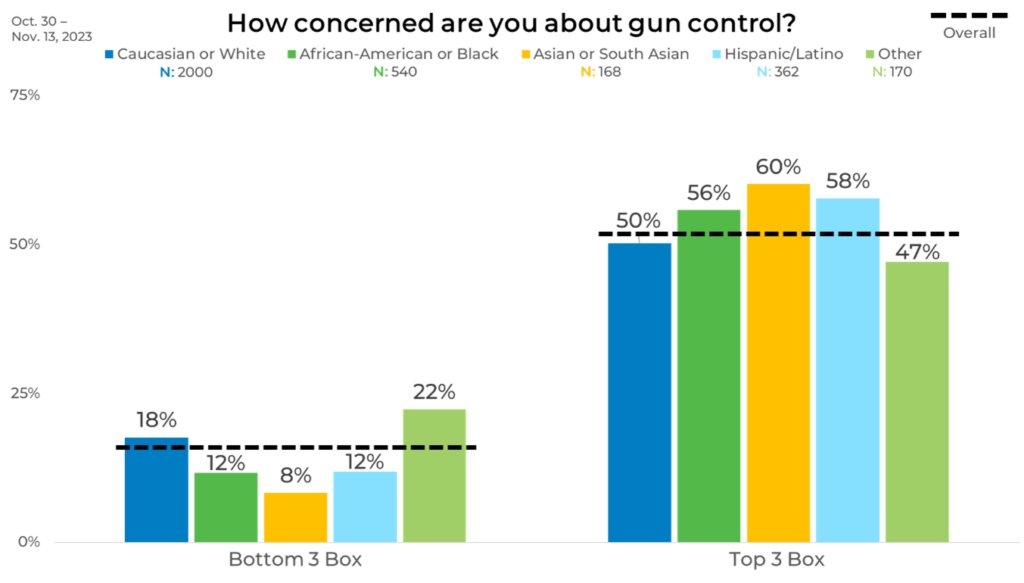
Panel
Finally, let’s look at the data by panel, where we saw significant variations by panel. Panel C had the highest percentage of respondents with a high level of concern, a 13-point difference compared to Panel E, and 5 points higher than the next highest, Panel D.
There was also a 9-point difference between Panels E and C among the respondents with low concern about gun control.

As you can see, awareness can vary significantly across demographics and by panel, impacting your data. That is why strategically blending sample is the best practice to ensure you are accounting for distributed demographic, as well as attitudinal and behavioral balance.
Learn more about our Strategic Sample Blending approach by clicking the button below.


